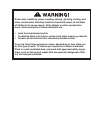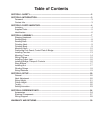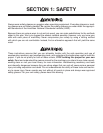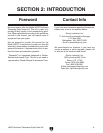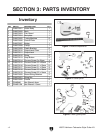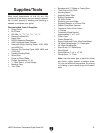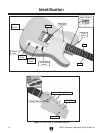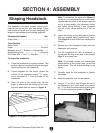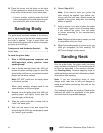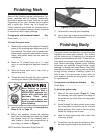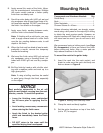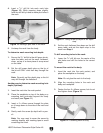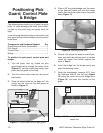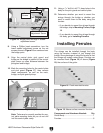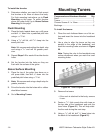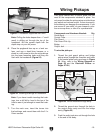
-8-
H8070 Heirloom Telecaster-Style Guitar Kit
Like the guitar body, the guitar neck has been
rough sanded at the factory. Final sanding should
be done as described in the previous sub-sec
-
tion Sanding Body. Consider applying inlays or
additional design work on the
fretboard and head-
stock before final sanding.
Note: If you are considering inlays or other
design work,
take time to test your designs in
scrap wood before performing the work on the
instrument.
The fretboard requires no sanding. Sanding the
fretboard will affect the playability of the guitar
and could lead to irrepairable damage.
Sanding Neck
The guitar body has been sanded at the factory,
but it is up to you to do the final sanding before
the finish is applied. To get a good finish, the
body should be sanded with a series of sandpa
-
per grits up to #320 grit.
Components and Hardware Needed: Qty
Guitar Body .......................................................
1
To sand the guitar body:
1. Wear a NIOSH-approved respirator and
ANSI-approved safety glasses when
sanding wood!
2. Use a flexible sanding block with #150 grit
aluminum-oxide sanding paper to sand the
guitar body until there is a consistent scratch
pattern on the entire surface.
Note: DO NOT round over the neck pocket
or the body cavities.
When hand sanding, always sand in the
same direction as the wood grain.
3. Resand the entire guitar body with #220 grit
sanding paper and lightly round over the
outside edges of the body.
4. Wipe the guitar body with a damp cloth to
“raise” the wood grain.
5. Wait until the wood is dry and resand the
entire body with #220 grit sandpaper to sand
the “raised” grain smooth.
Sanding Body
6. Repeat Step 4 & 5.
Note: If you want to stain your guitar, the
stain should be applied now before con
-
tinuing with the next step. Stains cannot be
applied to the guitar body after the sanding
sealer is applied.
7. Apply a primer if you plan to paint the guitar
a solid color. Apply a coat of sanding sealer
if you stained the guitar. Use the sealer
or primer according to the manufacturer's
instructions.
Note: Make sure the primer or sealer you use
is compatible with your fin
ish.
8. When the sanding sealer or primer is dry, use
#320 grit sandpaper for final sanding. DO
NOT sand through to bare wood.
10. Place the tuners into the holes on the back
of the headstock to check their position. The
ends of the tuners should touch each other.
— If tuners overlap, carefully widen the shaft
of the overlapping tuner and adjust its posi-
tion relative to each of the other tuners.



